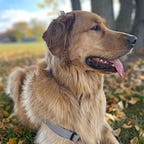Game Dev Diary — Nov. 15, 2021 — Jason Tennent
With the cooldown of Dubai, we have moved our focus from rapid placeholder development to a period of optimisation.
In this post, we’ll walk you through how this focus shift has impacted the design, programming, and art of the game.
Design:
- Formalise and review design documentation.
- Review current mechanics, both in practise and theory then cull/alter where necessary.
- Lay foundational implementation for the MODEX system with aid of Programmers.
- Stress testing implemented systems and report bugs/alterations where necessary.
Magnus and I wear a preposterous amount of different “hats”. As we’ve barrelled ahead with development, our documentation has grown out of date. So we are doing the very glamorous and never-ending task of documentation maintenance. Which is actually a huge part of the design process.
Documenting the various systems and mechanics is a lengthy job. Being able to articulate your concepts in written and verbal form is crucial. Pushing through and updating the documentation has already been fruitful. It has illuminated some areas we hadn’t thought about yet.
In the moments between the pages of documentation, we are pseudo-testers. Just ensuring that the mechanics and systems are implemented without error. This is not only a performance-based task but also a design one, it gives us the chance to see our theory work in action which is why playtesting is vitally important.
Excitingly though we are starting to tackle the elephant in the room: The MODEX. We’re laying the very first blocks of our keystone system, it’s a scary but enthralling process.
Programming:
- Refactor code where necessary for optimisation and performance.
- Optimise replication of animations in multiplayer settings.
- ‘Replication’ in this sense means how well the servers handle imitating where/what Player A is doing to Player B.
- This is massively important for a high stakes, competitive shooter.
- Implement the first type of grenade, the simple but always useful fragmentation grenade.
- Bug fixing.
Optimisation is a massively important process, a lot of game projects make the mistake of creating unoptimised assets and systems and then fail to fix all these issues that have accumulated in the final months of the project. Not only do you need to consider how to optimise what you have in front of you but also how extra elements and systems that interact with it will work best together.
Replication, replication, replication. It’s a hugely important part of any multiplayer but it’s most acutely felt in competitive shooter games. What is the enemy player doing? Where is the enemy player? Which way are they pointed? When you reload, for example, the game has to trigger the animations and send that to the server to replicate to every other player looking on. All of which has to happen in the blink of an eye, because if you’re in a firefight you need to know an abundance of information which needs to be relayed to you in real time. This is why it’s such an important task but one, like optimisation, will never end.
Art:
- Create and optimise Third Person animations.
- Create custom First-Person arms inspired by Heavy Seeker MODEX concept art.
- Animators and 3D Artists collaborate to develop first-person arms.
- Begin texturing custom First-Person arms.
Animation and arms! We’ve almost got a full set of third-person animations so your friends can see how cool you look sliding down the mountain. This ties hand in hand with the replications tasks, we want smooth and concise animations. Our animator and 3d artist work in close communication with each other as the 3D modeller needs to build the mesh in such a way that it makes the animator’s job smoother.
Soon enough we’ll have our own custom arms to reload, climb and punch with. The modelling first pass is more or less complete and we’ve moved onto UV mapping, normal mapping and texturing. After that, it’ll be modelling a submachine-gun-type model or starting the monumental task of creating a Third Person character.
As always thank you all for your support,
Jason Tennent, Design Director.
